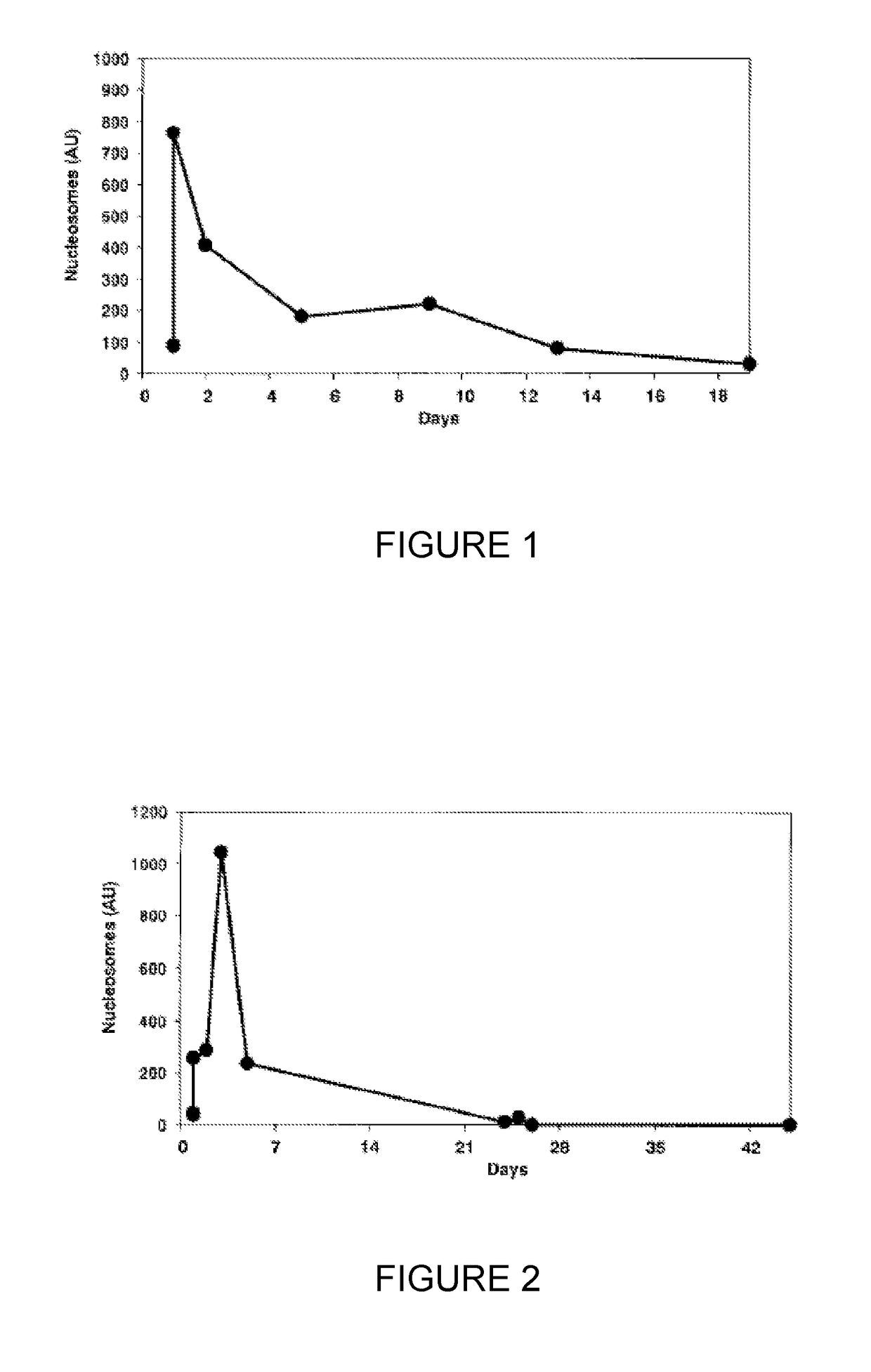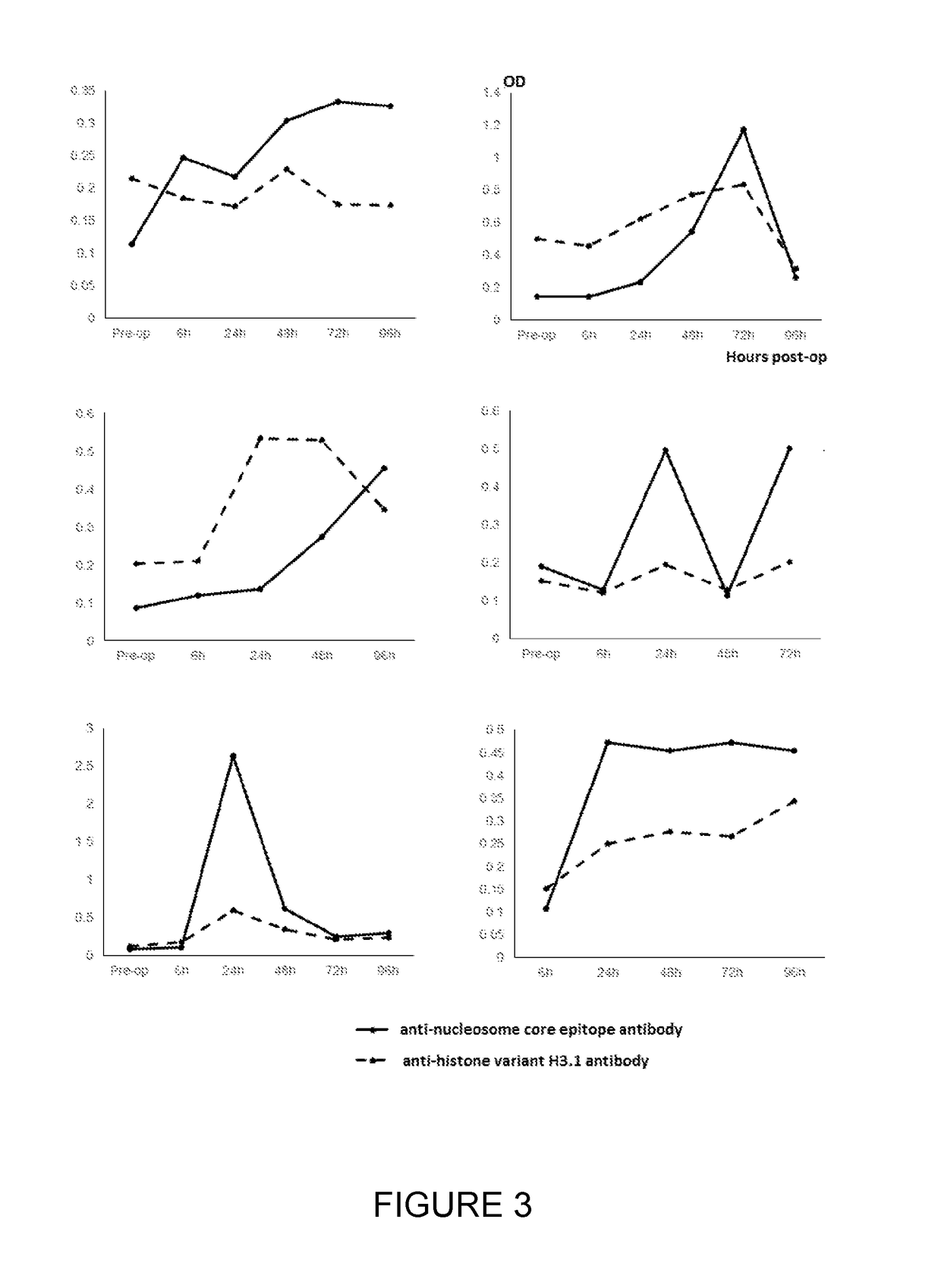Method for the enrichment of circulating tumor DNA
a technology for circulating tumors and dna enrichment, applied in material analysis, instruments, biological material analysis, etc., can solve the problems of high cost of biopsy, limited tissue dna tests, and inability to perform invasive biopsy procedures on patients
- Summary
- Abstract
- Description
- Claims
- Application Information
AI Technical Summary
Benefits of technology
Problems solved by technology
Method used
Image
Examples
example 1
[0101]An antibody directed to bind specifically to histone isoform H3.1, H3.2 or H3t is biotinylated and immobilized on streptavidin coated magnetic beads (Dynal) by the recommended method of the manufacturer. The beads are washed several times with loading buffer using a magnetic separation system. Serum or plasma taken from a cancer patient is diluted in loading buffer and added to the beads. Nucleosomes containing histone H3 variant are adsorbed to the beads. Other serum / plasma components remain in solution and are removed by means of magnetic separation. The beads are washed with buffer. The nucleosomes containing histone H3 variant are now isolated on the beads. ctDNA associated with the isolated nucleosomes is extracted by the phenol / chloroform method or other standard extraction methods. The extracted DNA may be analysed for genetic or epigenetic features of cancer.
example 2
[0102]An antibody directed to bind specifically to histone isoform H3.1, H3.2 or H3t is biotinylated and immobilized on streptavidin coated magnetic beads (Dynal) by the recommended method of the manufacturer. The beads are washed several times with loading buffer using a magnetic separation system. Serum or plasma taken from a cancer patient is diluted in loading buffer and added to the beads. Nucleosomes containing histone H3 variant are adsorbed to the beads. Other serum / plasma components remain in solution and are removed by magnetic separation. The beads are washed with buffer. The nucleosomes containing histone H3 variant are now isolated on the beads. The isolated nucleosomes are removed from the magnetic beads using an elution buffer and the nucleosomes are analysed by proteomics methods including Mass Spectroscopy.
example 3
[0103]Serum samples taken from 6 patients with CRC pre-surgery and at 6, 24, 48, 72 and 96 hours post-surgery were assayed for circulating cell-free nucleosome levels using a commercial (total) nucleosome ELISA produced by Roche employing a common anti-nucleosome core epitope and a labelled anti-dsDNA antibody. The samples were then re-assayed but using an anti-histone variant H3.1, H3.2 or H3t capture antibody. The measured (total) nucleosome levels increased following the trauma of surgery using the commercial ELISA but the response to surgery was altered and muted for nucleosomes containing histone H3 variant measured using the assay employing anti-histone H3.1, H3.2 or H3t antibody. The results are shown in FIG. 3.
PUM
| Property | Measurement | Unit |
|---|---|---|
| volumes | aaaaa | aaaaa |
| mass spectrometry | aaaaa | aaaaa |
| Mass Spectrometry | aaaaa | aaaaa |
Abstract
Description
Claims
Application Information
 Login to View More
Login to View More - R&D
- Intellectual Property
- Life Sciences
- Materials
- Tech Scout
- Unparalleled Data Quality
- Higher Quality Content
- 60% Fewer Hallucinations
Browse by: Latest US Patents, China's latest patents, Technical Efficacy Thesaurus, Application Domain, Technology Topic, Popular Technical Reports.
© 2025 PatSnap. All rights reserved.Legal|Privacy policy|Modern Slavery Act Transparency Statement|Sitemap|About US| Contact US: help@patsnap.com



